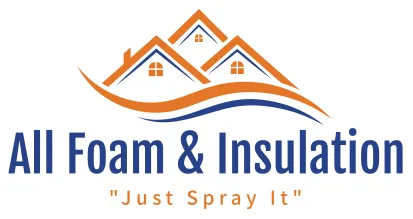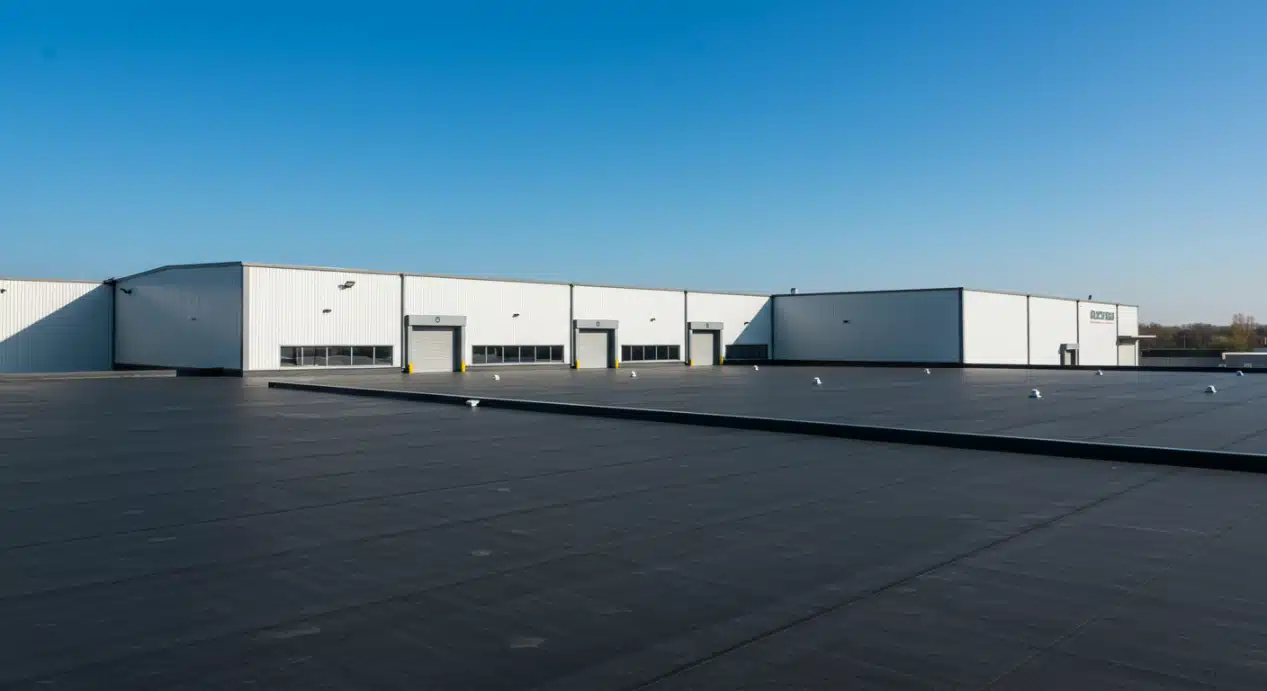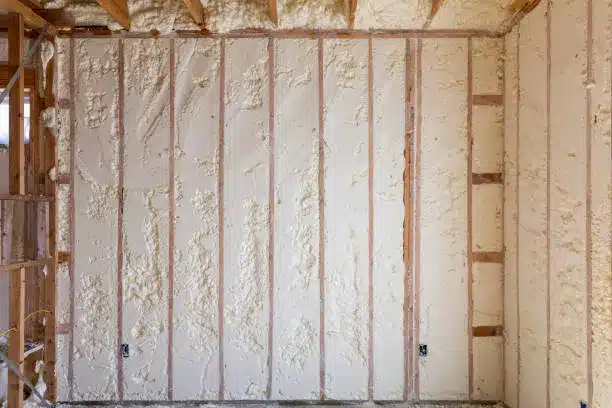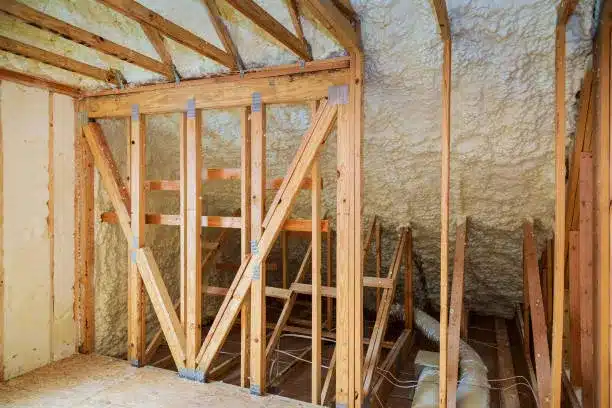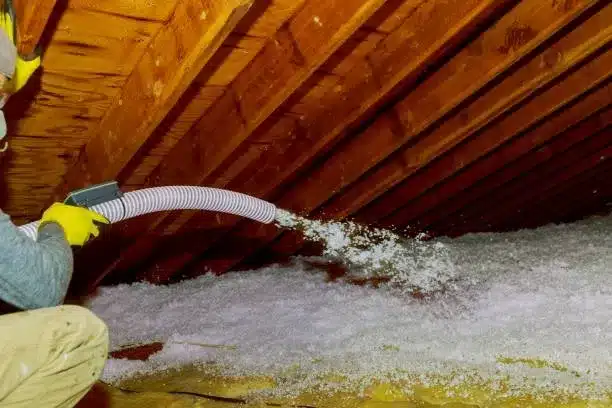With utility prices steadily rising, many Oregon homeowners and business owners are looking for better ways to manage energy costs. While replacing windows or upgrading insulation gets a lot of attention, the roof is often overlooked—even though it plays a major role in your building’s overall energy performance.
If you have a flat or low-slope roof, switching to a membrane roofing system could make a real difference. At All Foam & Insulation, LLC, we’ve helped hundreds of customers across Oregon lower their energy bills and extend the life of their roofs with smart, efficient solutions.
What Is Membrane Roofing?
Membrane roofing is a type of roofing system made specifically for flat or gently sloped roofs. Instead of shingles or metal panels, these roofs use continuous sheets of waterproof material that block heat, resist UV rays, and reflect sunlight.
There are a few different types:
- TPO (Thermoplastic Olefin): A white, reflective surface that bounces sunlight away from the building. It’s one of the most energy-efficient roofing options available today.
- EPDM (Ethylene Propylene Diene Monomer): A strong, flexible rubber membrane. It’s black in color, holds up well over time, and works great in cooler climates.
- Modified Bitumen: An older, asphalt-based system. While still used in some buildings, it typically doesn’t perform as well when it comes to energy savings.
How Membrane Roofing Helps Lower Energy Costs
1. Reflects Heat
TPO roofs, especially white ones, are excellent at reflecting sunlight. Instead of absorbing that heat, they send it back into the atmosphere. This helps keep buildings cooler, especially during Oregon’s warmer summer months.
2. Reduces Stress on HVAC Systems
When your roof keeps heat out, your cooling system doesn’t have to work as hard. That means fewer hours of operation, reduced wear and tear, and lower monthly energy bills.
3. Maintains Stable Indoor Temperatures
Membrane roofs help regulate interior temperatures, so your building stays comfortable without constant thermostat adjustments.
TPO vs. EPDM – Which Is Better?
| Feature | TPO | EPDM |
| Best Use | Sunny, warm climates | Cooler or shaded areas |
| Reflective | Yes – highly reflective | No – absorbs more heat |
| Lifespan | 20 to 30 years | 15 to 25 years |
| Maintenance | Low | Medium |
If your building gets a lot of sun, TPO is the better choice for energy savings. If your roof is shaded or your winters are harsher, EPDM can be a better fit.
Real Savings Over Time
Installing a membrane roof isn’t just about protection—it’s an investment. Many property owners see up to 30% in energy savings each year. While the initial cost may be higher than traditional roofs, the savings often pay for the upgrade in five to seven years.
And because these systems last up to three decades with proper care, you’ll keep seeing benefits long after installation.
Membrane Roofing vs. Traditional Roofing
| Feature | Membrane Roofing | Traditional Roofing (Asphalt, BUR) |
| Reflects Sunlight | Yes (up to 80%) | No (10–20% reflectivity) |
| Energy Efficient | Excellent | Poor |
| Maintenance | Minimal | More frequent repairs |
| Environmental Impact | Low | High |
Traditional flat roofing systems absorb more heat and offer very little insulation value. That added heat drives up cooling costs and increases the workload on your HVAC system.
Eco-Friendly and Smart for the Future
Membrane roofing does more than save money:
- Reduces emissions: By lowering your building’s energy use, you reduce your carbon footprint.
- Supports sustainability: Many TPO and EPDM membranes are recyclable.
- Qualifies for credits: Depending on where you live, cool roofs may earn you rebates or tax incentives.
If you’re aiming for energy certification or LEED points on a commercial project, these systems can help get you there.
Expert Installation Matters
Installing membrane roofing requires experience and precision. At All Foam & Insulation, LLC, we take the time to evaluate your roof’s condition and recommend the right system for your needs.
Once installed, we offer maintenance services to help extend its lifespan. A simple inspection every year or two, along with keeping the surface clean, goes a long way toward protecting your investment.
Why Choose All Foam & Insulation, LLC?
- We understand Oregon’s unique climate challenges
- We offer both TPO and EPDM systems from top-rated manufacturers
- Our team is licensed, insured, and fully trained
- We provide energy audits and detailed roofing assessments
- We stand by our work with warranties and responsive service
We’re not just here to replace your roof—we’re here to improve your building’s comfort, efficiency, and long-term value.
Let’s Talk Energy Savings
If you’re building new or looking to upgrade an existing flat roof, let us show you how membrane roofing can work for you. We’ll walk you through your options and give you a free, no-obligation quote.
📞 Call: (541) 826-9600
📧 Email: [email protected]
🌐 Website: allfoamandinsulation.com
FAQs
How long will a membrane roof last?
TPO usually lasts 20–30 years. EPDM typically lasts 15–25 years. Regular maintenance helps maximize lifespan.
Can it be installed over my existing roof?
In many cases, yes. This depends on your roof’s condition and local codes.
Is it worth the investment?
Yes—most customers see noticeable energy savings and avoid frequent repairs compared to older roofing systems.
Will I qualify for any rebates or tax breaks?
You might! We’ll help you find out what local or federal programs apply to your situation.

